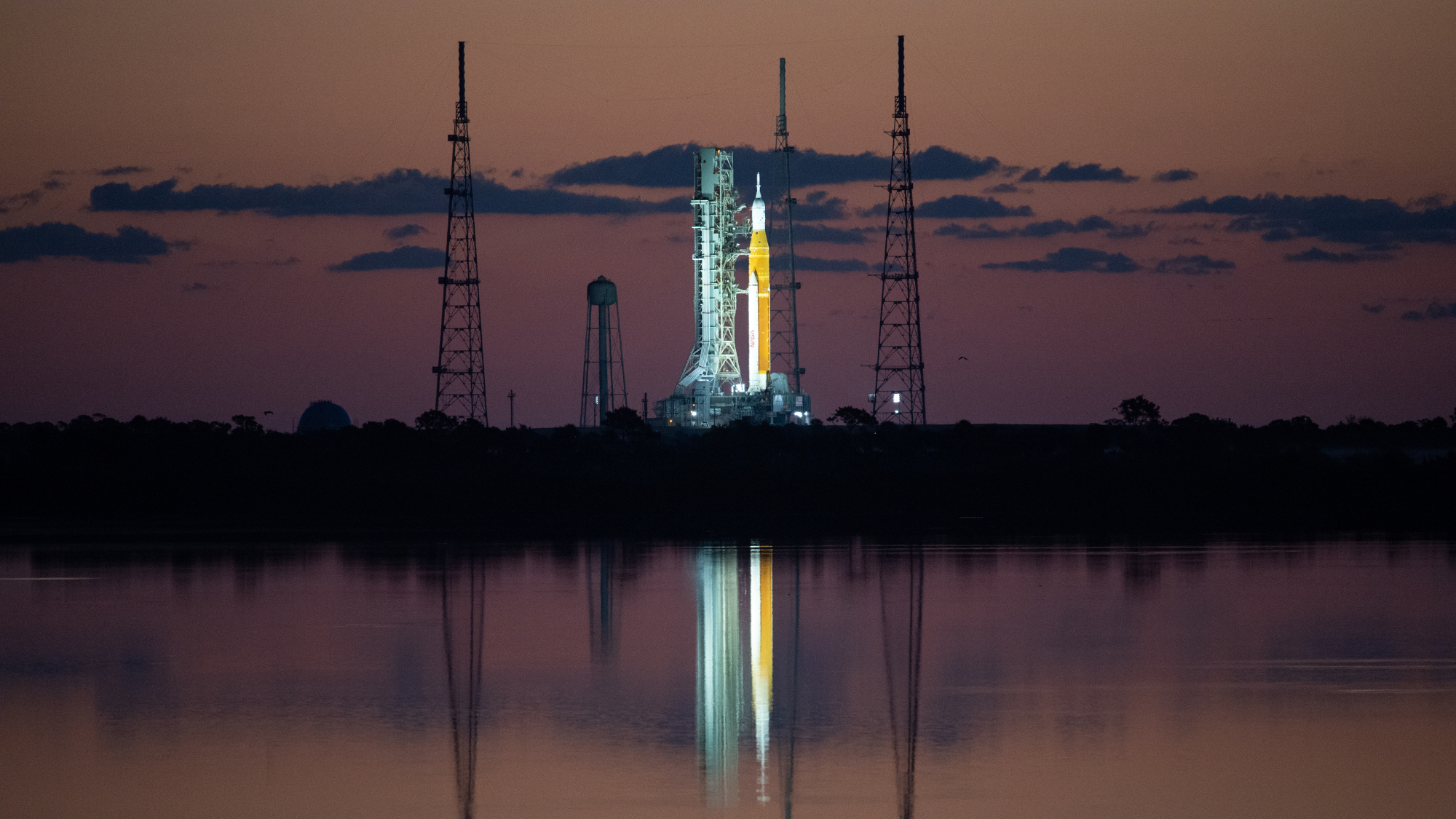

Liftoff for NASA’s next moon mission, Artemis 1, is T-minus one day after being postponed three times—twice due to engine problems and once to avoid an approaching storm. Boosted by the space agency’s most powerful rocket ever, this uncrewed expedition will bring us another step closer to human lunar exploration, and you can watch the launch from the comfort of your own home.
How to watch the Artemis 1 launch
The Orion spacecraft, atop the Space Launch System (or “mega moon rocket,” as NASA has called it) will blast off within a two-hour launch window that opens at 1:04 a.m. Eastern Standard Time on Wednesday, November 16. The official countdown started at 1:24 a.m. Monday, and coverage of the rocket fueling process will begin at 3:30 p.m. today. Full launch coverage will kick off at 10:30 p.m., about three hours before the main event. When Artemis 1 finally lifts off, it will mark the start of a 1.3 million-mile journey around the moon that’s expected to take about 25 days.
It’s too late to purchase tickets to the main visitor complex, but you can watch the SLS rocket soar into the sky on NASA TV, NASA’s official live broadcast, the official NASA Twitch stream, or NASA’s mobile app. You can also register for free online to let the agency know that you’re hosting a watch party through their Virtual Guest program. (This will be especially exciting if you’re interested in receiving a virtual passport as a memento for the occasion, though this is not official documentation and will not guarantee you access into space. Stamps will be mailed after the event to registered guests.)
If you’d like to get your launch coverage in Spanish, you can listen en español on NASA’s YouTube page. Coverage of the launch itself will begin there at 12 a.m. Wednesday and will include interviews with Hispanic members of the mission. You can find a detailed breakdown of NASA’s coverage schedule on the space agency’s website.
And if you just can’t wait, NASA TV has been broadcasting on a regular schedule, and you can tune in at any time to learn more about outer space while we all wait for the countdown to hit zero.
What to expect from future Artemis missions
Astronauts haven’t been on the moon since the last Apollo mission in 1972, and Artemis 3 will carry the first woman and person of color to Earth’s only natural satellite. Future missions intend to send people to Mars.
But for now, we’re witnessing a fresh start to space exploration, and if all goes as planned, Artemis 1 will ensure NASA and the astronauts on future missions are well-prepared to face the challenges of traveling beyond Earth’s atmosphere.
This story was originally published on August 16, 2022 and has been updated regularly to keep pace with the mission’s frequent changes.
